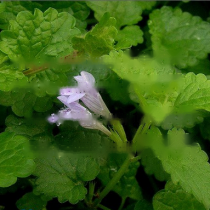
Chinese name: Lianqiancao
Alternative names: Huoxuedan, Qiancao, Landing money
Distribution area: Except northwest and Inner Mongolia, all over the country Production
Harvest time: Spring to Autumn
Dosage: 15~30g
Storage: Store in a dry place to prevent mildew
1. Morphology of Lianqiancao
The length of Lianqiancao can reach about 200 mm to 800 mm, and the body has soft and sparse coat, which is relatively short and thin. Stem veins are square columnar, slender and twisted. The surface is yellow-green or purple-red forehead, and there are no roots on the nodules. The texture is relatively brittle, it is easy to break, and the middle of the section is often empty. The leaves are opposite, most of them are wrinkled, and after flattened, they are kidney-shaped or nearly heart-shaped, with a length of 1-75px long, 1.5-75px wide, gray-green or green-brown, with crenellated edges; petiole slender, long 4 to 175px. Whorl umbels axillary, corolla two-lipped, up to 50px.
2. The value of Lian Qiancao
The whole plant of Lian Qiancao can be used for medicinal purposes. Their taste is relatively acrid, slightly bitter, and cold in nature. Returns to the liver, kidney, and bladder meridians, can relieve dampness and relieve stranguria, clear heat and detoxify, dissipate blood stasis and reduce swelling. It is mainly used to treat heat stranguria, stone stranguria, damp-heat jaundice, sore and carbuncle swelling and pain, traumatic injury. The dosage is 15-30g each time. Appropriate amount for external use, decoction for washing. After taking Lian Qiancao alone, drug-induced dermatitis was caused, and the rash increased significantly and expanded to the limbs. During processing, remove impurities, wash, cut into sections, and dry.
3. Planting of Lian Qiancao
The planting of Lian Qiancao should be planted in fertile sandy loam and shady and moist plots. It can also be used for sporadic cultivation on the corner of the house and the side of the pond and ditch. When preparing the land, apply 2500-3000 kg of decomposed organic fertilizer per mu. After ploughing, the soil is raked to fineness, and the border is 1.2 meters wide. The width of the border is 90 cm, the width of the ditch is 30 cm, and the depth of the ditch is 20 cm. The seeds of Lian Qiancao are small, difficult to collect, and the seedlings grow slowly, so cuttings are often used for propagation. Every March-April, the stolons are cut, and every 3-4 nodes is cut into a section for cuttings. Open a shallow ditch 20 cm from the edge of the border, and the depth of the ditch is 6-8 cm. Cut the cuttings in the shallow ditch at a plant spacing of 10 cm. The cuttings are immersed in soil for 2-3 knots, and a layer of thin soil is covered after inserting. Gently compact and water the roots.
Guess you like it
Sapindus | Grapefruit | Coconut | Metasequoia | Palm Bamboo | Mayo | Hawthorn | | Almond Tree |
Salvia | Cistanche | |
Syringa | Venus Flytrap | Wild Strawberry | Cistanche | Vetch | Reed | Silver Queen | Ryegrass | Alfalfa | Plantain | Chrysanthemum | Turning white grass | Dendrobium golden hairpin | Shegan | Mirabilis | Du Ruo |
![[Dog Training 5] The training method of pet dog dining etiquette](/static/img/12192/12192_1.jpg)




